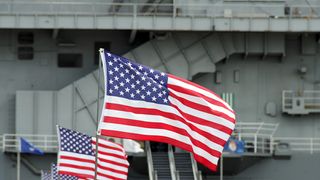Executive summary
- US military forces abroad underscore commitment and capability in the Western Pacific, but must seek to avoid creating the perception of containing China.
- The US Navy’s possible expansion in Asia could potentially be perceived by China as the vanguard of a new containment strategy and must be carefully managed.
- The essence of US military policy in Asia is not to prepare for war so much as to prevent it.
In comparison to Cold War norms, the size of current US military forces abroad is currently modest. Recent increases in US capacity in Asia however, are likely to be misinterpreted as either provocative or pusillanimous. For some, the deployment of Marines in Australia and more attack submarines on Guam is proof of the United States militaristic ways. For others, the modest scale of these deployments instead underscores the limited means America has to reinforce its rebalancing effort in Asia. The US continues to maintain a robust global presence, with three main global concentrations of overseas power (Europe, CENTCOM, and East Asia) and more than sixty formal allies or other close security partners. Over time, Americans have learned that sustained and peacetime overseas engagement is far preferable to the greater risk of war that can result from retrenchment or isolationism. In light of the current strategic environment, the US should deploy Airsea Operations in a more nuanced way that both counters China and reinforces regional stability. In relation to nuclear deterrence, aspirations towards a nuclear-free world must be reconciled with continued proliferation in countries such as North Korea, China, India and Pakistan.





